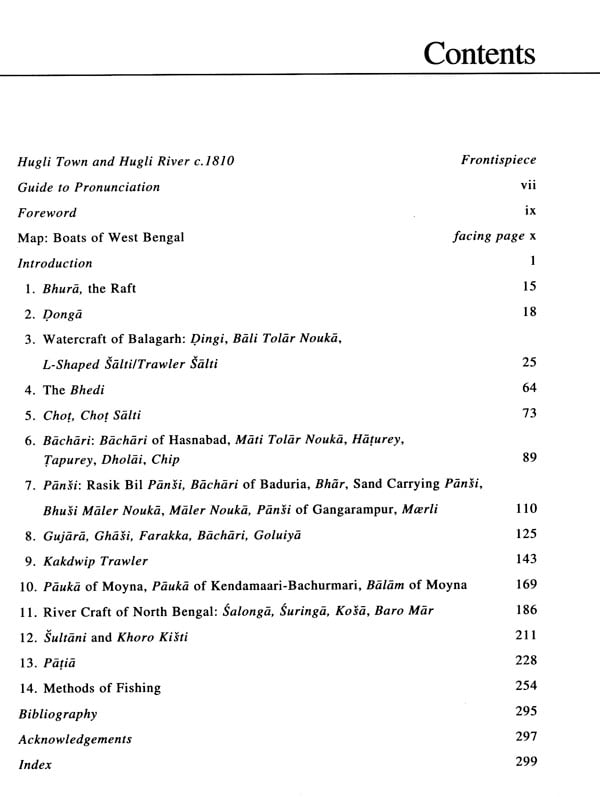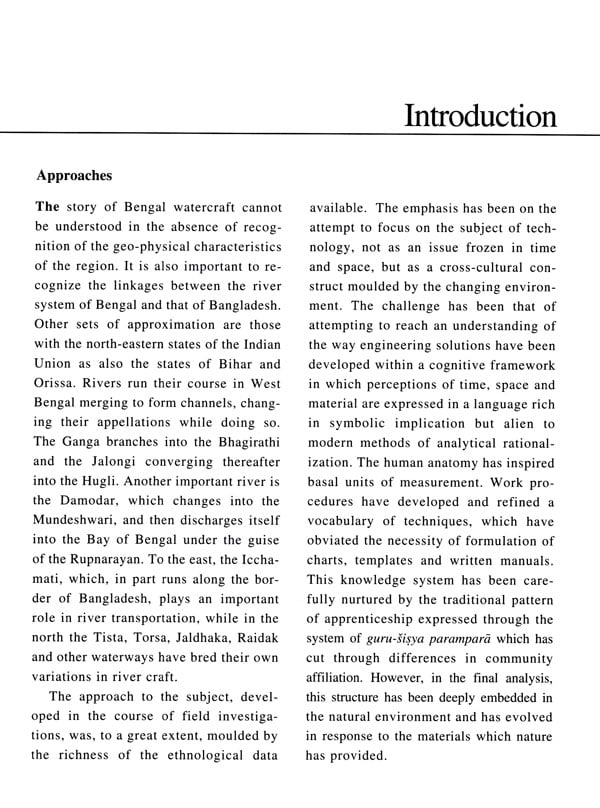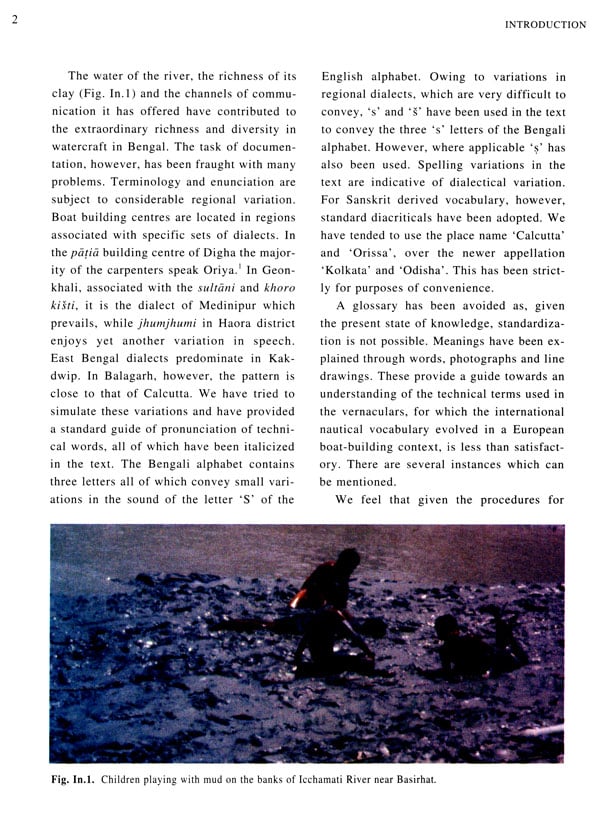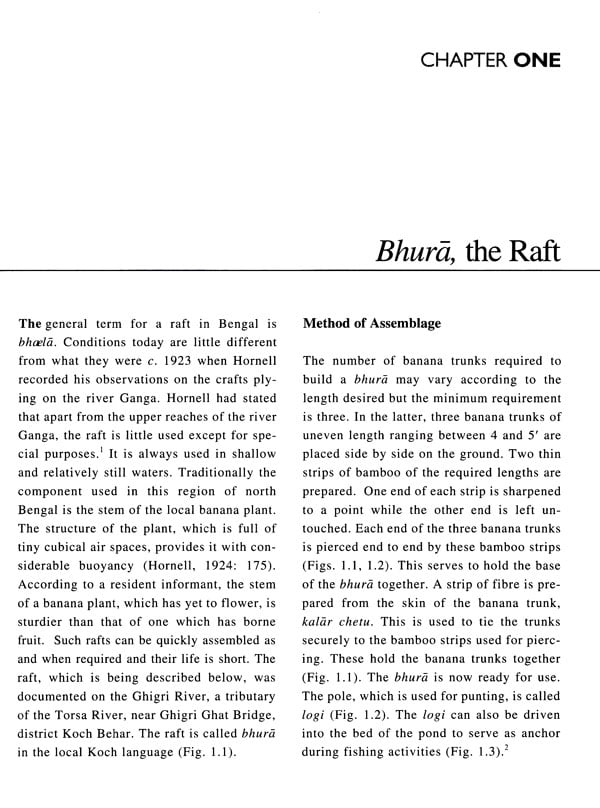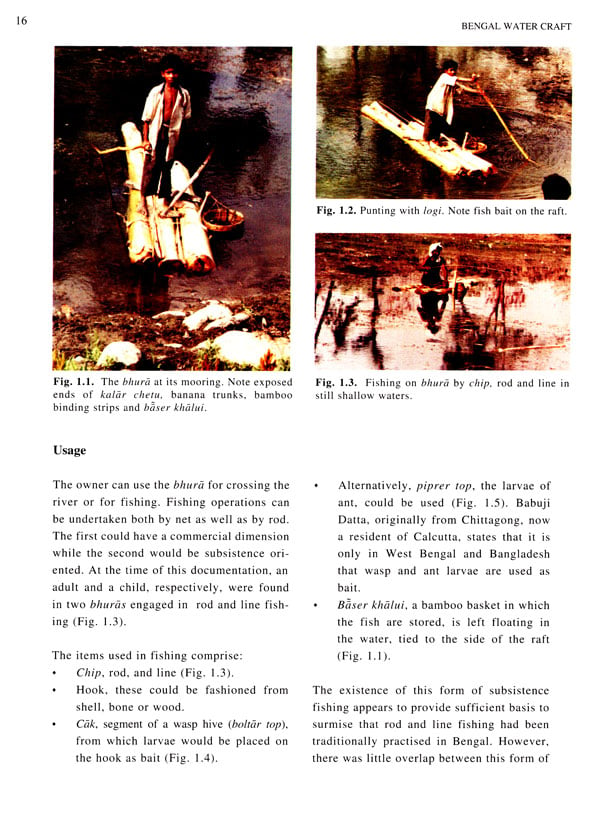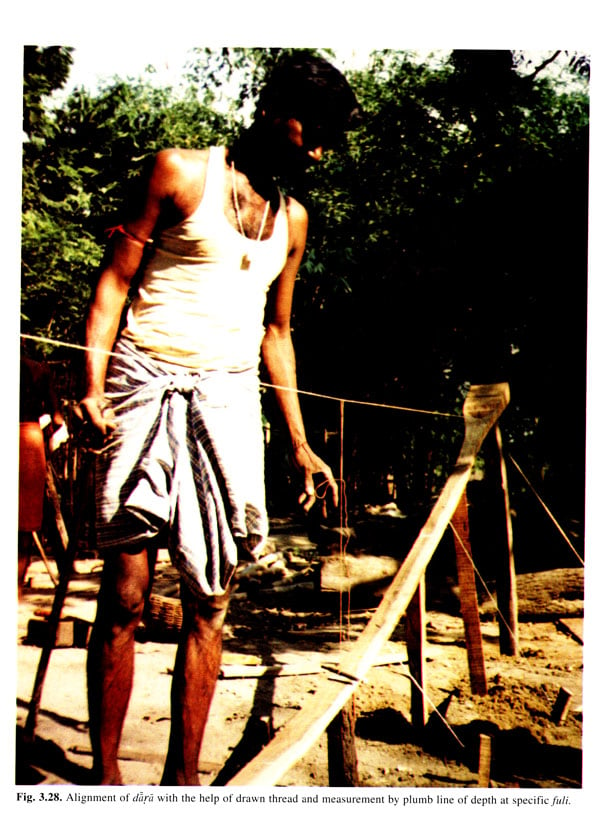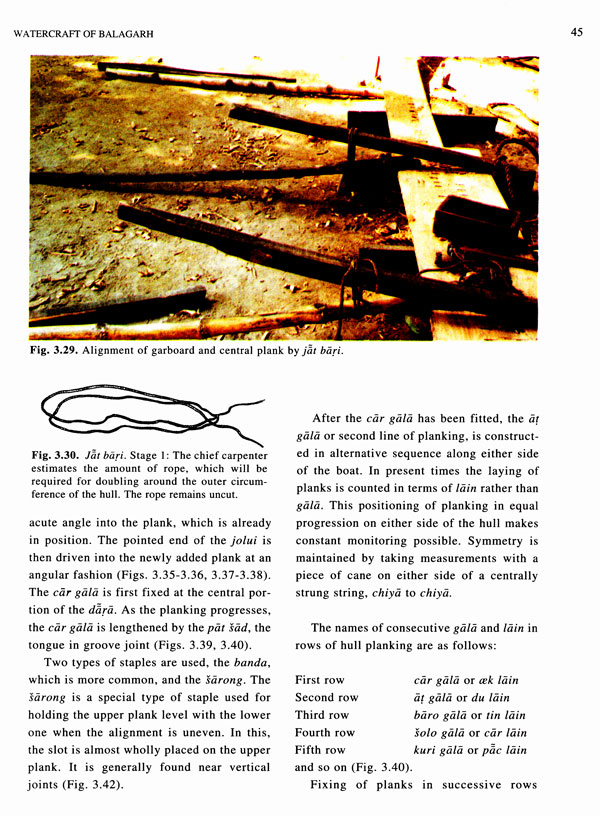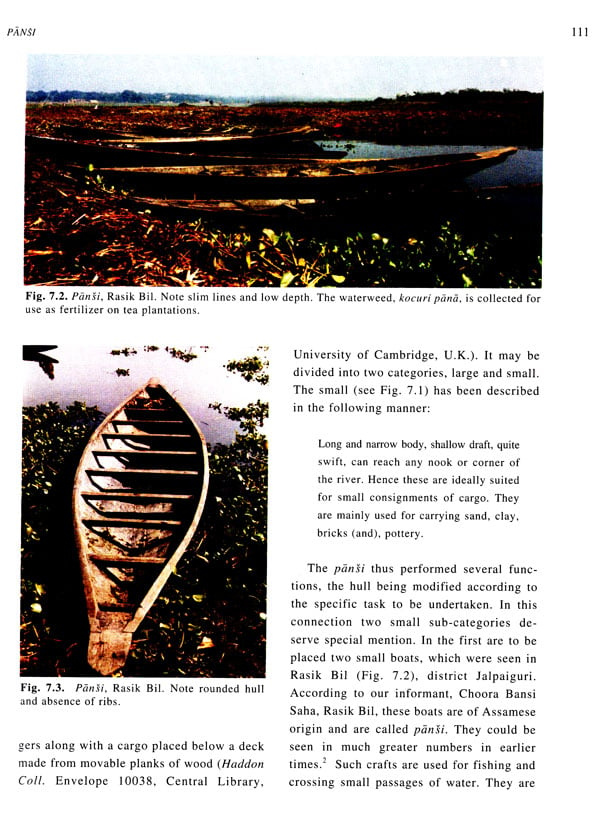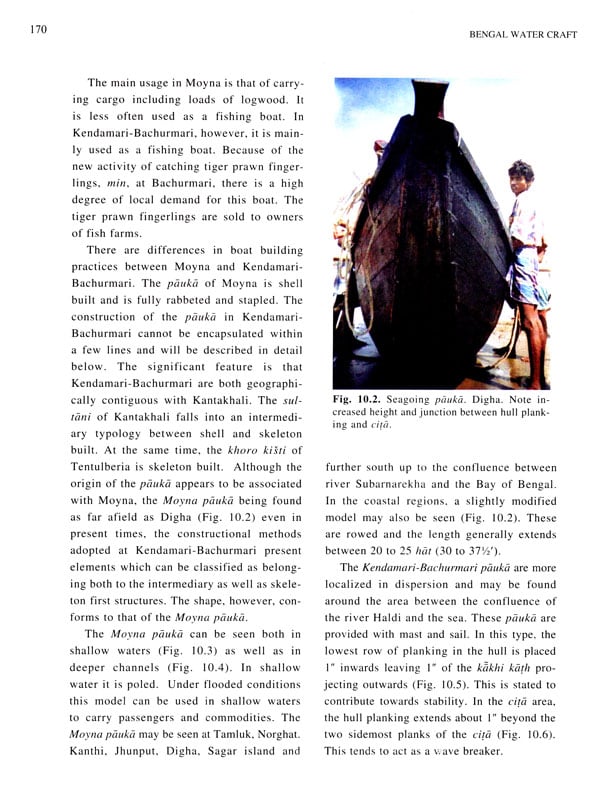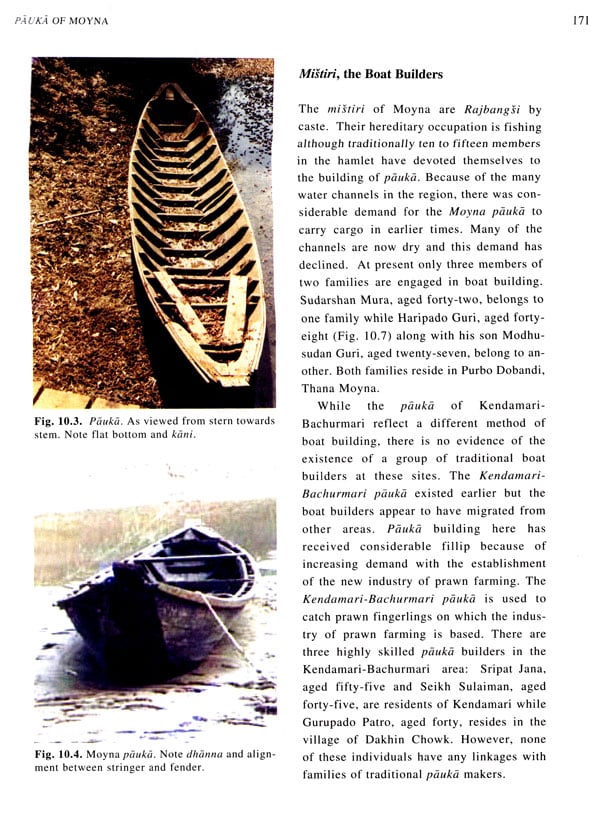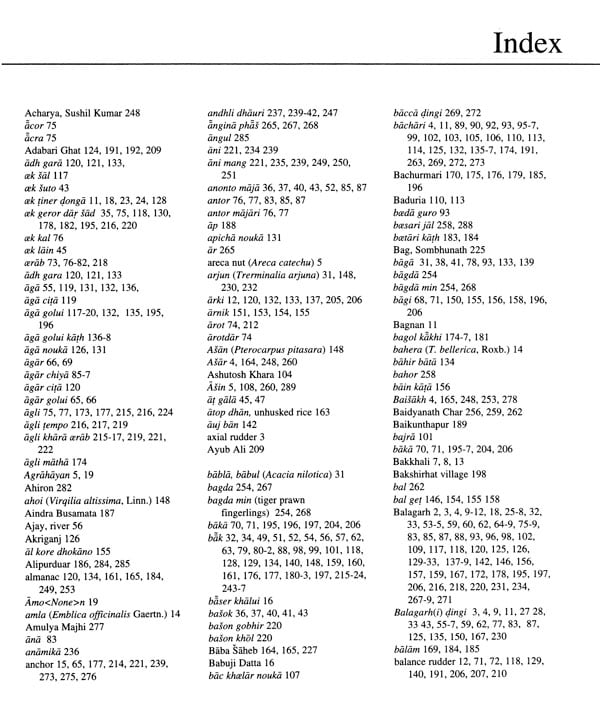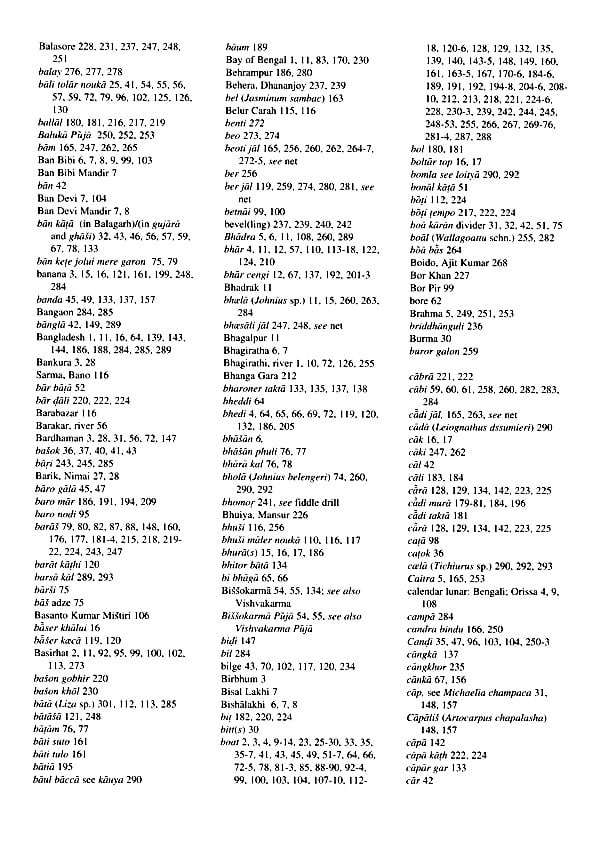
Bengal Water Craft (Boat- Building and Fishing Communities)
Book Specification
| Item Code: | NAZ879 |
| Author: | Lotika Varadarajan |
| Publisher: | Manohar Publishers and Distributors |
| Language: | English |
| Edition: | 2016 |
| ISBN: | 9789350980712 |
| Pages: | 324 (Throughout Color Illustrations and 1 Map) |
| Cover: | HARDCOVER |
| Other Details | 11.20 X 9.00 inch |
| Weight | 1.58 kg |
Book Description
This is a unique work on the boat building traditions of Bengal. The boats of West Bengal have been influenced on the one hand by the boats of Bihar and on the other by the traditions of Bangladesh. North Bengal follows the ecology of the sub-Himalayan region and the boats of the region illustrate this well.
Thirteen chapters describe the typology of different boats found in West Bengal. From raft and dugout, the survey moves to the rich centre of boat building at Balagarh. From here it moves to cargo carriers such as the bhedi. Boats are linked to ecological regions but massive programmes such as the Damodar Valley Corporation changed the pattern of the waters. The remarkable ingenuity of the boat builders is shown in the new boat types such as the Cho_t Salti, which were developed in conformity with the changes in river flow. Chapter fourteen outlines fishing activities in the Sundarbans area, linking this to boat typology.
From the methodological angle the work follows closely the model evolved by George Hornell. All available historical records have been examined. The author has conducted a meticulous survey of existing ethnological sources which are used to fill in the gaps in our knowledge. A map showing the centres where various types of boats are made in West Bengal has also been included.
This book therefore ventures into new ground, linking ecology with historical methodology, and is above all, a singular tribute to the all round artistry of the Bengal boat builder.
Lotika Varadarajan, an ethno-historian was educated at the Universities of Delhi and Bombay, Chulalongkorn University, Bangkok and Newnham College, University of Cambridge, U.K. She is currently Tagore National Fellow, National Museum, New Delhi and also Member, Advisory Council, Centre of Traditional Knowledge, Ambedkar University, New Delhi.
The study represents extensive and intesive fieldwork in the area of Bengal, interspersed as it is by many major and minor rivers, tributaries and estuaries leading to the Bay of Bengal through the Sunderbans. In these regions, fishing constitutes the major occupation and remunerative economic livelihood continued from ancient times to the present day. Fishing communities respond to seasons, climate, rainfall, floods as well as to drying of the river and changes in flow. There is an immense body of traditional knowledge, which has been orally transmitted across generations. The boats, which contain outstanding design features, continue to be constructed from various kinds of wood.
Although many boats are mechanised, sails are also taken on board to be hoisted as and when feasible. The non-mechanised traditional craft, of which a large variety may be seen, utilize wind power when available and depend on paddle and oar for propulsion and the traditional rudder for direction. River boats have constituted the main means of cargo trans-port in Bengal in the past. They continue to perform this function in present times and also cater to the needs of a vast rural passenger set-up. These traditional systems of low cost eco-friendly transport are now being increasingly supplanted by surface transport dependent on petroleum.
The population comprises many religious denominations along with tribal groups. All pur-sue practices and rituals in consonance with seasonal variations. James Hornell, who recorded the operations of Bengal water craft in the last decades of the pre-Independence era, recorded the ground reality as it existed at that time. Much has changed since then. The present study provides the corresponding position today. There is, however, every danger that globalization will annihilate this enormous repertoire of knowledge and skill. It is extremely important to map this data and Dr. Lotika Varadarajan has ably performed this task.
Book’s Content and Sample Pages